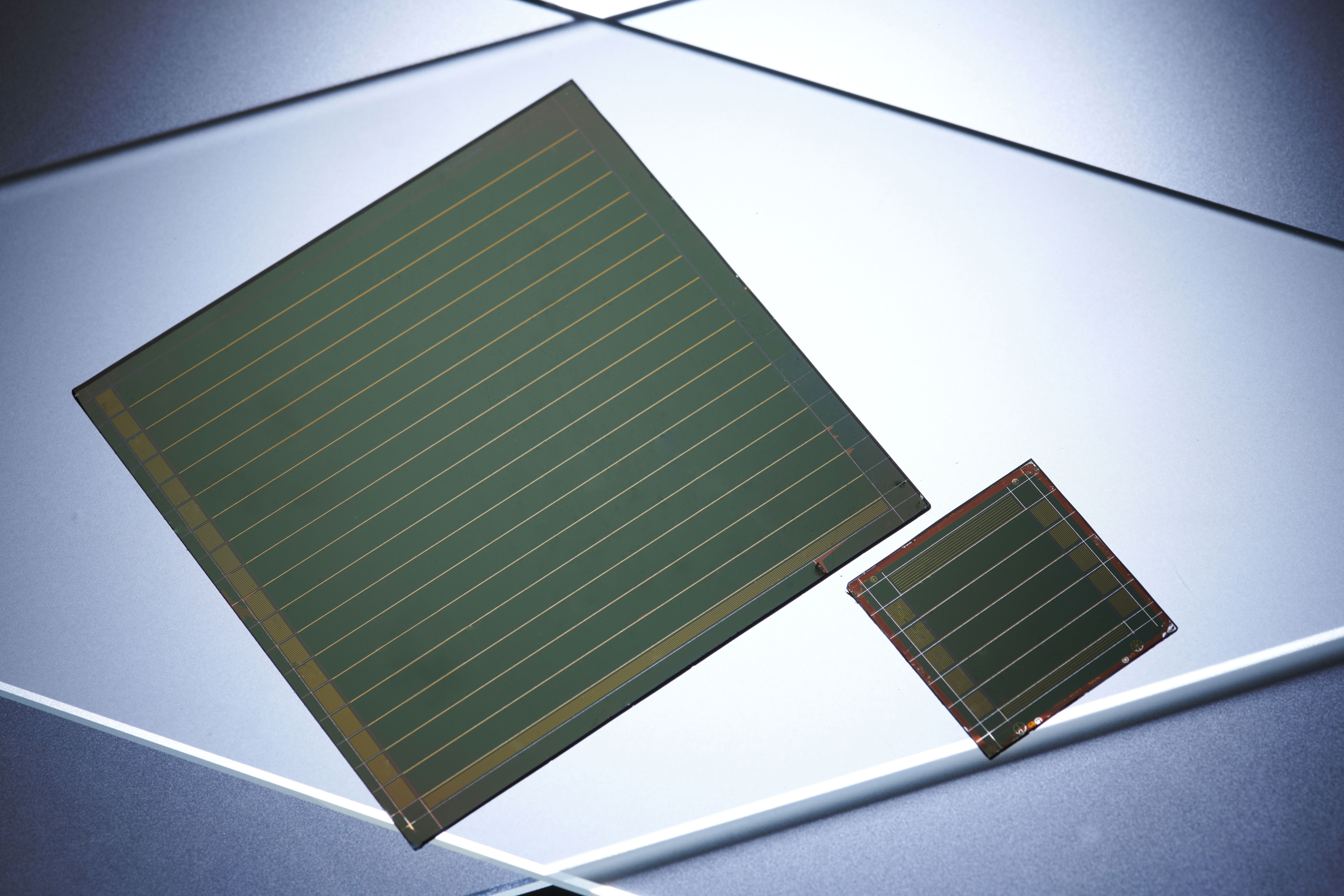Researchers in Germany have shown how a combination of AI techniques has the potential to improve the manufacture of perovskite solar cells—which are among the most efficient photovoltaic technologies [Image: Amadeus Bramsiepe, KIT]
Scientists in Germany have reportedly shown how artificial intelligence (AI) could enable large-scale manufacturing of perovskite solar cells (Adv. Mater., doi: 10.1002/adma.202307160). Using a combination of deep learning and explainable AI, they found that they could identify subtle variations in the semiconductor thin-film formation process that are inaccessible to purely human analysis, which could potentially enable industrial production of this promising photovoltaic technology.
Focus on crystallization
Perovskite semiconductors are materials containing three or more elements and organic components arranged in a particular crystal structure. Tandem solar cells comprising very thin, uniform perovskite layers and a conventional photovoltaic material such as silicon can reach efficiencies as high as 33%. However, such cells currently have a number of shortcomings—they rapidly degrade when exposed to moisture and light, and thus far the devices cannot be manufactured at scale without defects.
It was this latter problem that the new research was designed to address. Carried out by Ulrich Paetzold of the Karlsruhe Institute of Technology, Paul Jäger of the interactive machine-learning group at the German Cancer Research Center and their teams, the work involved using AI to analyze the most crucial step of manufacturing perovskite solar cells—crystallization of the perovskite thin film.
The work involved using AI to analyze the most crucial step of manufacturing perovskite solar cells—crystallization of the perovskite thin film.
As the researchers explain, the success of this process depends on optimizing numerous parameters related to the material, laboratory setup and manufacturing technique. Because the optimal settings of these parameters are site specific, they currently have to be determined through trial and error. Even then, variations in conditions that are too small to be noticed by human operators can cause apparently identical sets of parameters to yield different outcomes.
Paetzold and colleagues are not the first to use AI to try and improve this process. Other scientists have already exploited machine learning to optimize, for example, the specific type of perovskite, its crystal structure or bandgaps. However, the parameters involved in this earlier work were all limited to the thin -film itself.
A holistic AI approach
The new research, in contrast, looked at the whole process used to make the film. It did so by combining deep learning with several different types of explainable AI―the former to find patterns linking the process input parameters with the process outcomes, and the latter to render those patterns understandable to humans.
Specifically, the experiment involved analyzing the drying and crystallization of more than 1,000 thin films made from a metal halide perovskite. The work drew on videos that the group had already recorded, which captured the photoluminescence generated (when illuminated with a blue LED) across each emerging film at multiple points in time.
The researchers found that this AI video analysis provided far more information about the factors controlling thin-film quality than could any human analysis
The idea for the study was to use a fraction of these videos to train a neural network. In other words, to provide the photoluminescence intensities recorded in each video as the network’s inputs, alongside two outputs―the efficiency of the completed solar cell and the mean thickness of the fabricated thin film. Once trained, the network was then given the photoluminescence data from the remaining videos to see how accurately it could predict the associated efficiencies and film thicknesses.
The researchers found that this AI video analysis provided far more information about the factors controlling thin-film quality than could any human analysis of photoluminescence data from specific points in time. In particular, they were able to establish which phases of the thin-film fabrication process should exhibit the most intense photoluminescence according to the quality of the film produced―which in turn revealed how the vacuum used to crystallize the perovskite during the thin-film production needed to be ramped up and then back down.
“One step closer” to industrialization
Paetzold and colleagues argue that their technique brings society "one step closer" to the industrialization of perovskite solar cells, saying, "We are able to infer actionable recommendations just by analyzing the video dataset and without having to carry out extensive and costly trial-and-error experiments."
However, they concede that their approach has its limitations. For one thing, the network is unable to predict a solar cell's efficiency as accurately as the film thickness, given imperfections created during the subsequent steps in cell production. They also point out that, like any AI-based analysis, their method relies on having sufficient training data.
Another factor is the quality of the data. Specifically, they note that increasing the technique's spatial resolution—for example, via scanning electron microscopy—would better highlight any particular crystal defects. The researchers say that this can't be done in situ, but they are confident that this won't prove a showstopper. Leaving aside the impact of successive solar-cell production steps, they deem "the possibility of important unobserved parameters and confounders as rather low."

